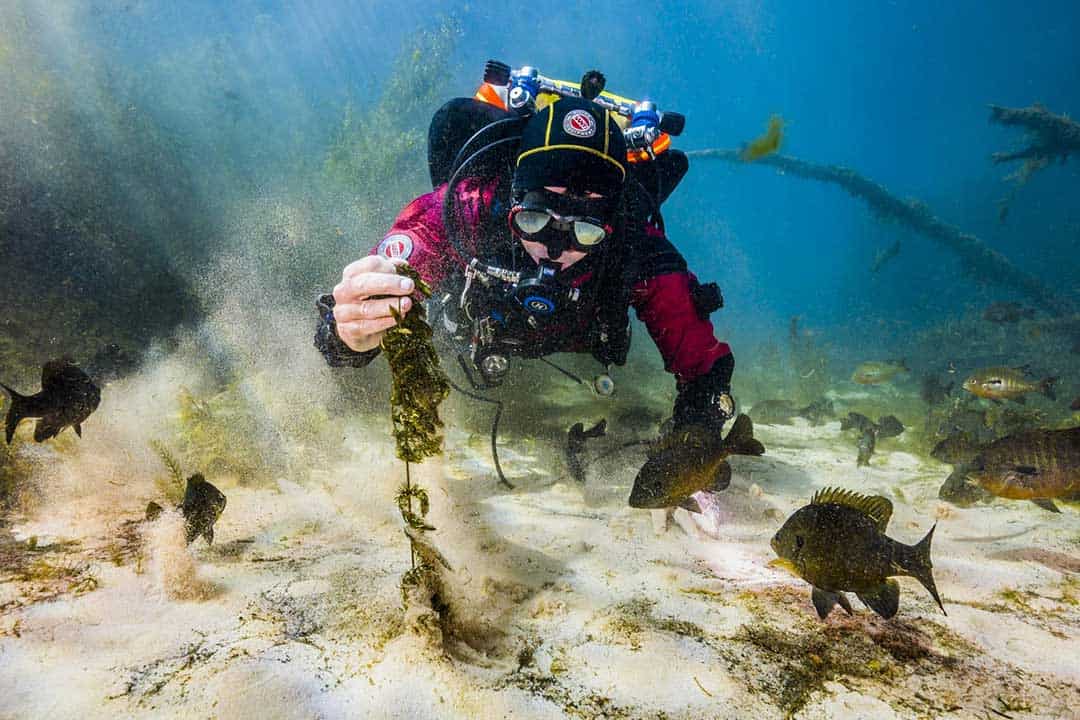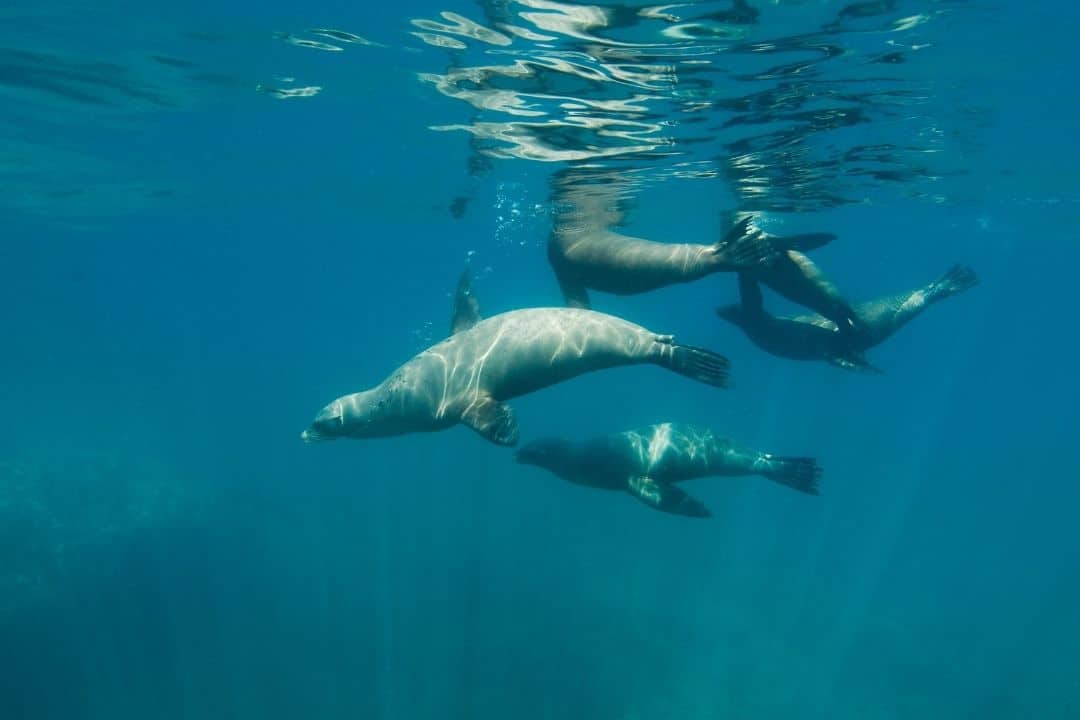Just glance at a map of the Southern U.S. state of Florida, and it’s very easy to see why there are so many terrific dive sites and underwater adventures to behold.
This tropical state is the perfect place to go scuba diving, as it’s the only state in the continental U.S. with a subtropical climate. So, not only is it beautiful above land, but the water never gets too cold, and it’s guaranteed to be enjoyable the majority of the year.
Florida is also well-known throughout the scuba diving community as a great spot for beginner divers, all the way up to your most experienced levels, so there’s fun for everyone!
With so much diving here, there are a plethora of dive centers and instructors, so no matter where you choose to explore, you can rest easy that you’ll be in safe hands and will get the most out of your experience with a guide.
Driving across Florida to explore several different places on your adventure is also easily accessible, with completely different and unique sites only a few hours from each other.
You can dive at the top of the state, all the way to the bottom of the Florida Keys and every dive site in-between. Dive a shipwreck, cave, natural freshwater springs, coral reef, statues, shore diving, coral islands… you name it and Florida’s got it.
Having lived in three areas of Florida, Key West, St. Peterburg, and Fort Lauderdale, I’ve covered a lot of ground when it comes to Florida diving and I’m excited to share the best sites, as known by the locals in this tropical state.
Let’s dive into the top sites for unique diving experiences across Florida in this guide of the absolute best scuba diving in Florida.
Reef Diving In Florida
Not surprisingly, the Florida Keys are the stars of the best reef diving in the entire state of Florida.
Divers come to the Florida Keys not just because it’s the only barrier reef in North America and the third-largest coral reef in the world, but it’s also home to Florida Keys National Marine Sanctuary, which protects this area and keeps the ecosystem healthy. This also makes for incredible diving.
Looe Key
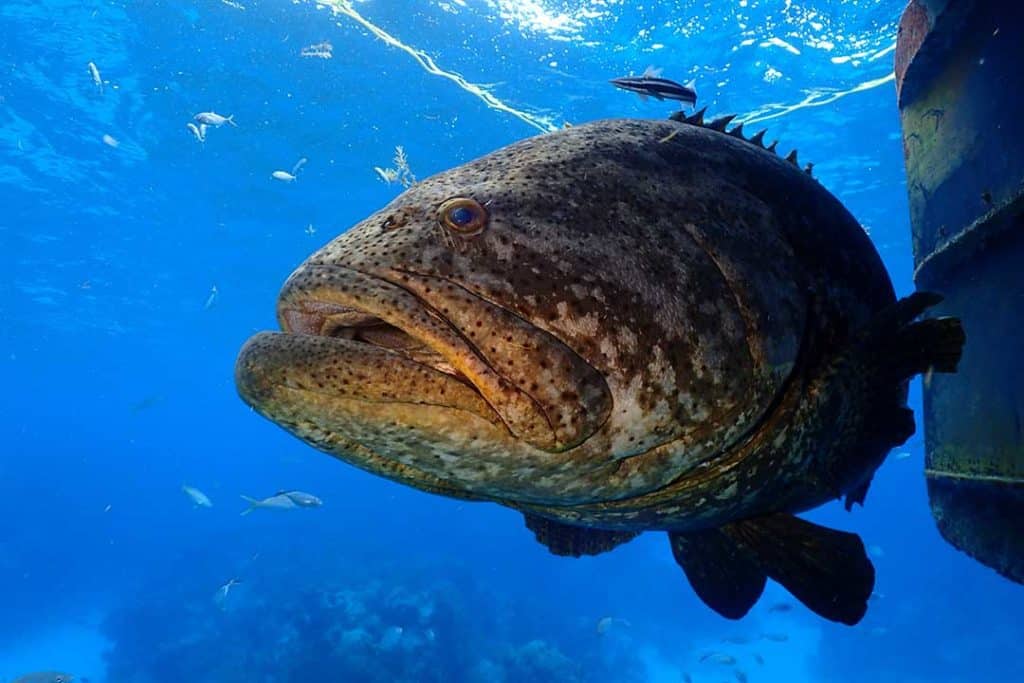
In the lower half of the Florida Keys, there is a gem called Looe Key, Just off of Big Pine Key.
This 5.5-square-mile National Marine Sanctuary is a protected underwater ecosystem and the most incredible reef I’ve had the pleasure of diving in Florida.
So much so, that I worked at a reef resort for six months just to dive it every day!
During my time working there, I saw many groupers the size of Prius cars that would hang out under the dive boat and were given names. I also saw plenty of reef and nurse sharks, as well as the occasional hammerhead shark.
Looe Key can easily be called an undersea oasis and is reminiscent of big reef structures found throughout the Bahamas.
This area was named after the HMS Looe, a British Man O’ War that ran aground in 1744. The wreck is no longer there, but the pristine reefs that lie within the sanctuary are a living coral system that features a high-profile spur-and-groove coral configuration.
The deeper reefs are an impressive collection of almost every type of sponge and soft coral found in the Florida Keys.
Looe Key Reef has been named in the top 10 diving sites for 10 years, and I completely agree with that assessment!
Over 150 species of fish, including angelfish and yellowtail, can be found in this reef ecosystem.
There are also around 50 different species of coral found here. Thankfully, much of the reef is protected as a part of the sanctuary, meaning the reef life here is super healthy and safe from overfishing, anchors, etc.
Molasses Reef

Molasses Reef is another coral reef located within the Florida Keys National Marine Sanctuary. It lies to the southeast of Key Largo, within the Key Largo Existing Management Area, which is immediately to the east of John Pennekamp Coral Reef State Park.
With over 30 dive sites ranging from 6-90ft (2-27m), this is one of Florida’s biggest and best reefs, and it’s easily the most requested reef by tourist divers in Florida as it’s known worldwide.
Crystal clear waters and easy access also make this destination a great choice for beginner, intermediate and advanced divers alike.
The spur-and-groove reef is home to over 600 species of corals and marine organisms, most notably, turtles, eels, sharks. For history buffs, you can head to sites like The Winch and Spanish Anchor, which are historical sunken artificial reefs.
Cave Diving In Florida
Many divers head to Florida just for the cave diving! Florida boasts many incredible dive sites in natural springs and caves, especially in the middle of the state, a few hours outside of Orlando and Tampa.
Many of the cave diving sites are beginner friendly, as there is plenty to dive at the site without actually entering an overhead cave area.
For this reason, a lot of certification dives are conducted at the sites before the entrance of the caves.
I definitely recommend heading to the sites very early on Saturdays and Sundays, or avoiding weekend days altogether, as the visibility may be blown by classes using the area during these times.
Devil’s Den

If you’ve been looking around the Internet at unique dive sites for any length of time, you’ll have seen images of Devil’s Den.
This site is beautiful, unique, and perfect for a photo opportunity. Located near the small town of Williston, this fern-draped sinkhole offers a unique geological setting and was actually once thought by early settlers to be the den of hell, because of steam rising from the warm waters in winter.
The water’s depths range around 50 feet but the cave systems are closed to divers.
Devil’s Den, Florida’s only underground prehistoric spring, is located in Williston, Florida. It boasts a history rich in artifacts and fossils, and even some with connections leading to the Smithsonian Institute.
With a constant temp of 72°F (22°C), a 3mm wetsuit is all that’s needed to explore the 50ft (15m) spring and its multiple swim-throughs and air pockets.
The deeper you go, you will find guppies, catfish, turtles, swim-throughs to explore, and fossil beds dating back 33 million years! Remains of camels, dire wolves, and saber-toothed cats have been discovered here!
Blue Grotto
Just a few miles down the road from the Devil’s Den is the Blue Grotto, a large clear-water cavern, which is open to divers of all skill levels. The maximum depth you can reach is 100 feet.
There is a compressed air-supplied bell at 30 feet, which is a favorite of divers at this site. Take out your regulator and speak to your dive buddy here to catch some adrenaline.
The Blue Grotto Dive Resort actually has tank fills on site, a little shop and a full resort with cabins that can be rented or areas to camp overnight. Diving here could definitely be a fun-filled camping, cookout, and diving weekend for a group of friends or a family.
Ginnie Springs

Located 6.5 miles from High Springs, Ginnie Springs is a gem for scuba diving and camping for many reasons. The waters are beautifully blue and clear and there are camp sites located throughout the springs, which make you feel like you’re in a beautiful and peaceful jungle.
There are three different great scuba diving sites at Ginnie Springs for certified Scuba Divers to explore: The Ginnie Ballroom, The Devil’s Spring System, and Santa Fe River.
The Ginnie Ballroom and The Devil’s Spring systems are great for exploring amazing underwater caves, but the Ginnie Ballroom is considered much safer and better for less experienced divers.
However, the Santa Fe River dive includes sights of prehistoric fossils.
Shore Diving In Florida
Florida offers a unique ability to dive directly from shore without necessity of a dive boat. There are few locations in the U.S. that this can be done: South Florida, Hawaii, and Southern California.
The two best areas for shore diving in Florida are the Blue Heron Bridge, famed as one of the best dive sites for photography, and Greater Fort Lauderdale, in which a fringing reef along the shore makes for great diving and entry for miles along the beach.
Blue Heron Bridge
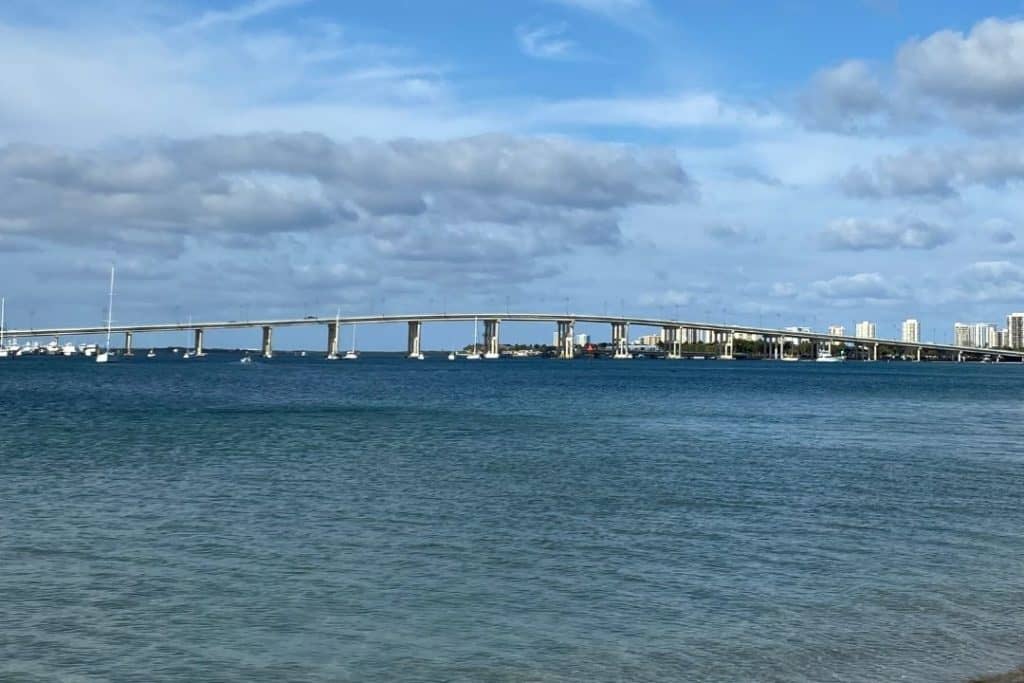
You may be thinking that under a bridge doesn’t sound like the most exciting dive or site for photography, but this dive site has repeatedly won awards for the best shore dive in the U.S.
Blue Heron Bridge, located off Riviera Beach, is the prime location for small marine life, macro photography, and some of the best diving in Florida.
Photographers head to the pilings for images of seahorses, octopus, batfish and rays. And, with depths from 6-25ft (2-8m), divers can take their time getting the perfect photo or exploring without running out of air too quickly.
Sunken shopping carts, two mini wreck, and three hammerhead shark statues are just a few of the items found at this site to look out for.
Greater Fort Lauderdale
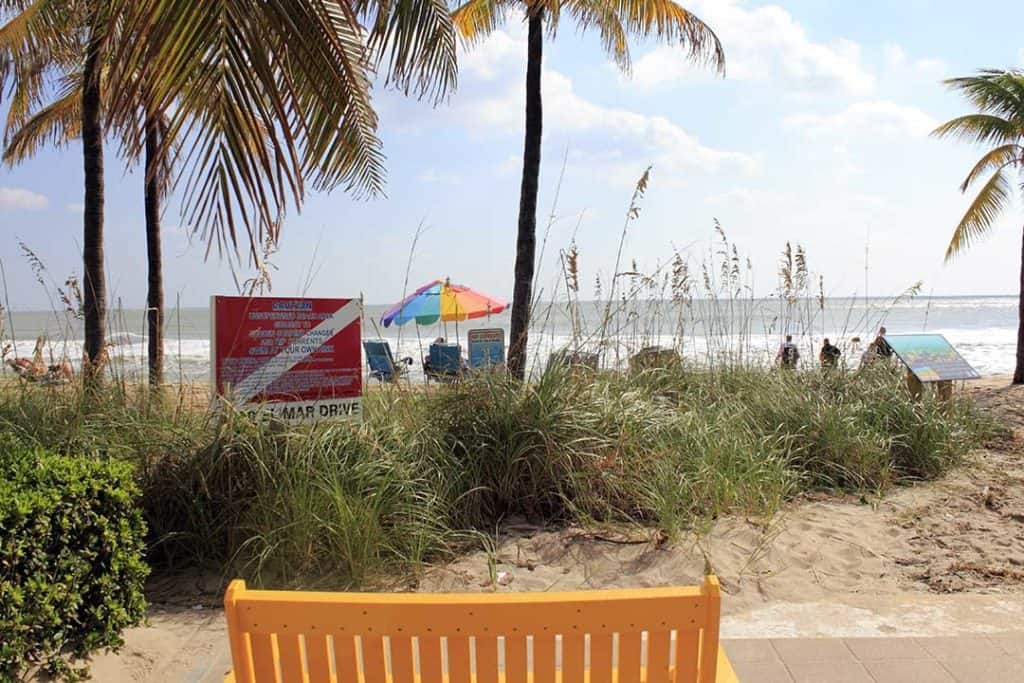
The Fort Lauderdale area is the only place in the continental U.S. where you can dive on a living coral reef straight off of the beach!
This is where I call home, and the shore diving was a huge selling point for me moving to and living here long term. You can simply grab a tank for $15 and get to diving without all of the hassle and added cost of a boat.
This fringing coral reef site is just a five-minute swim from the shore of Fort Lauderdale, Lauderdale-by-the-Sea and Hollywood areas. Usually, shore diving of this caliber is only found on islands in the Caribbean, but in Florida, you can head from the city straight to the reef.

The Barracuda Reef is one of the most popular reef dives in Fort Lauderdale and is suitable for beginner and advanced divers alike.
I see turtles, lobsters, moray eels, and nurse sharks regularly in this area. Advanced divers will enjoy Hammerhead Reef, as it’s much deeper and perfect for coral lovers.
The finger-like structure of the coral here makes a perfect backdrop for underwater photography. Plus, stingrays and parrotfish are known to make appearances, too.
Wreck Diving In Florida
It’s no secret that Florida boasts a crazy number of wrecks to enjoy for all levels of divers throughout the state. There are countless to name, but here are the top wreck sites of the state, as known by locals.
Hog Heaven

Hog Heaven, located off Palm Beach County, is a 180ft barge artificial reef that accidentally landed upside down when it was sunk.
Depths range from 50-65ft (15-20m), so the dive profiles of this wreck are perfect for beginners.
Plus, the easy-to-access openings to the barge house schools of snappers, grunts and angelfish.
Key Largo
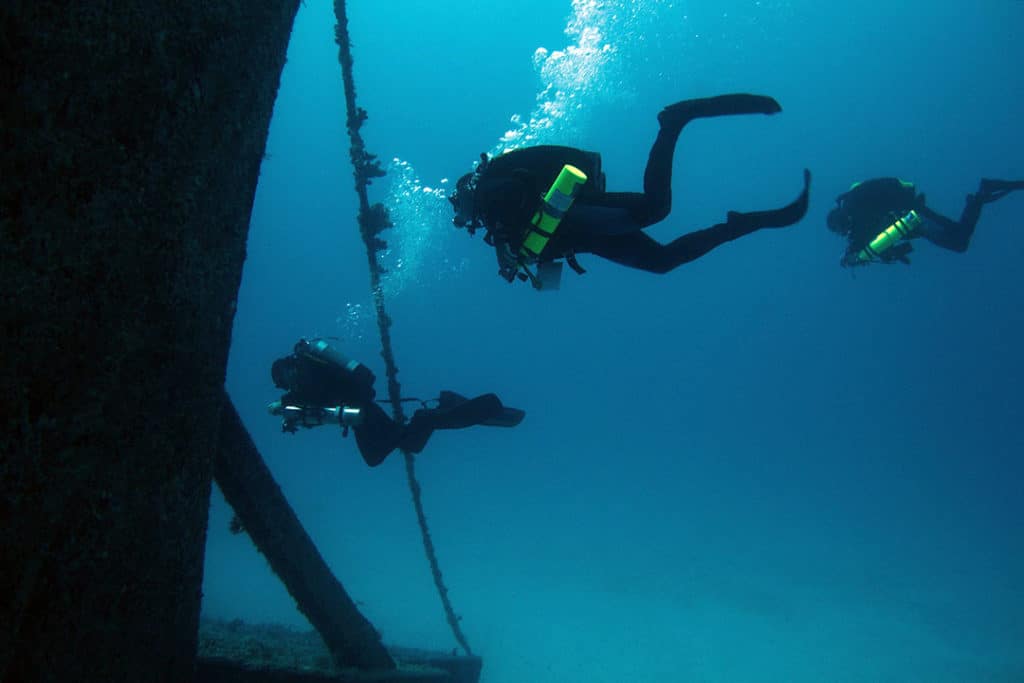
If you’re on the search for some really big wrecks, the 510-foot Spiegel Grove at the Florida Keys National Marine Sanctuary will be the main attraction for you in Key Largo. This wreck is located off Key Largo in 130ft (39m) of water.
Sunk in 2002, the 510ft (155m) U.S. Navy Landing Ship Dock landed on its starboard side, and in 2005, Hurricane Dennis placed the wreck upright.
Today, it attracts a healthy population of marine life, notably silversides and massive grouper.
Another great wreck in this area is the former Coast Guard cutters Bibband Duane. Barracuda and oceanic jacks are seen throughout these wreck sites.
UNSN Gen. Hoyt S. Vandenberg
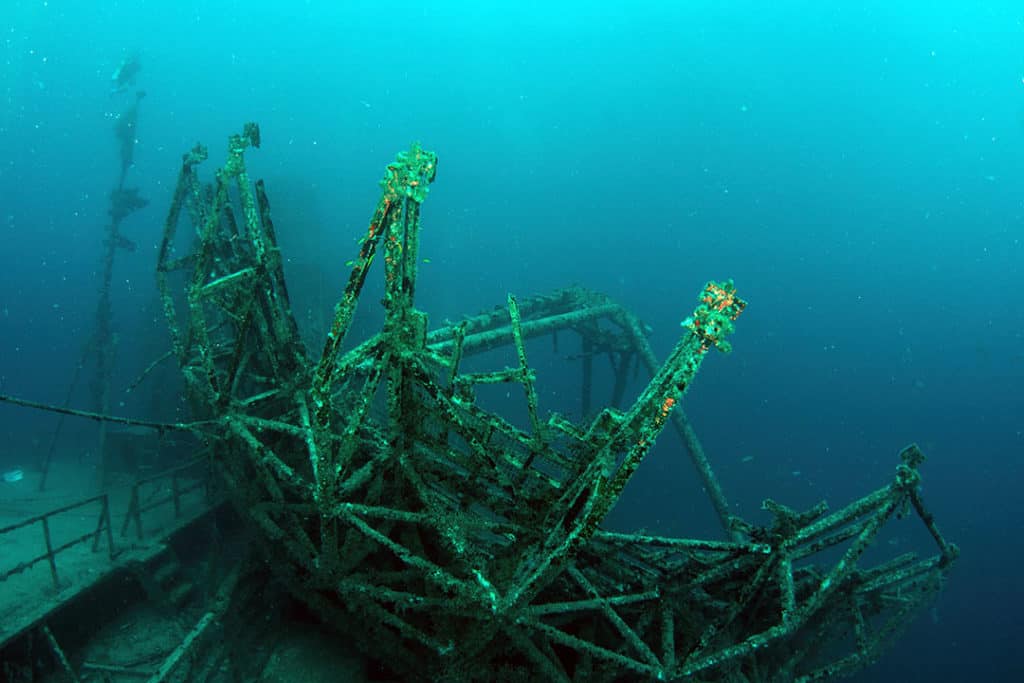
This wreck sits proudly in 140ft (42m) of water seven miles off Key West. The Vandenberg is 522 feet long and sits 165 feet down.
Measuring 10 stories high, and nearly two football fields long, highlights of this structure include the crow’s nest, part of the smokestack, and a weather balloon hangar at the stern.
I’ve personally dived this wreck about 50 times and still find new areas to explore – huge is an understatement!
We all know that there are many sunken ships across Florida, but have you ever heard of a ship being intentionally sunk before?
The USNS General Hoyt. S Vandenberg is the second largest ship ever to be intentionally sunk. This retired navy ship got a second life to intentionally create an environment for coral and fish in this area.
Panama City Beach
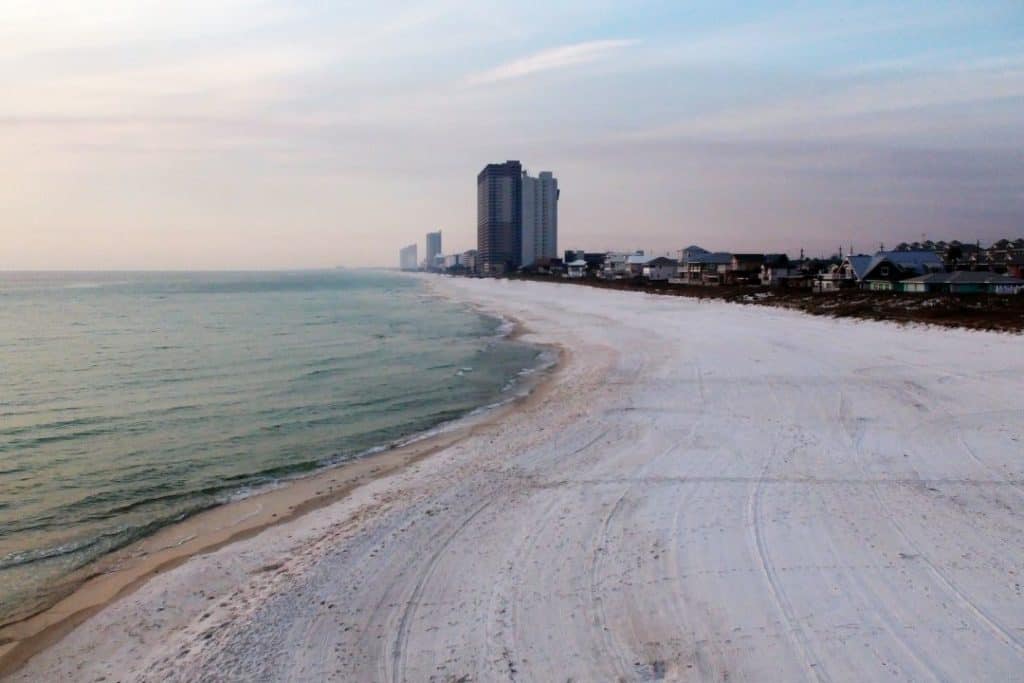
Panama City Beach is actually known as the wreck capital of the south. With over 150 dive locations and over 50 wrecks sunk as aggressive artificial reef program, it’s hard to run out of wrecks to explore.
A unique dive site in this area is the Black Bart Dive Site, an oil ring ship that sank in 1993
Divers can investigate the wheelhouse, the deck, and the cargo holds that house a ton of marine life, much of which comes from the nearby Warsaw Reef.
Fort Lauderdale
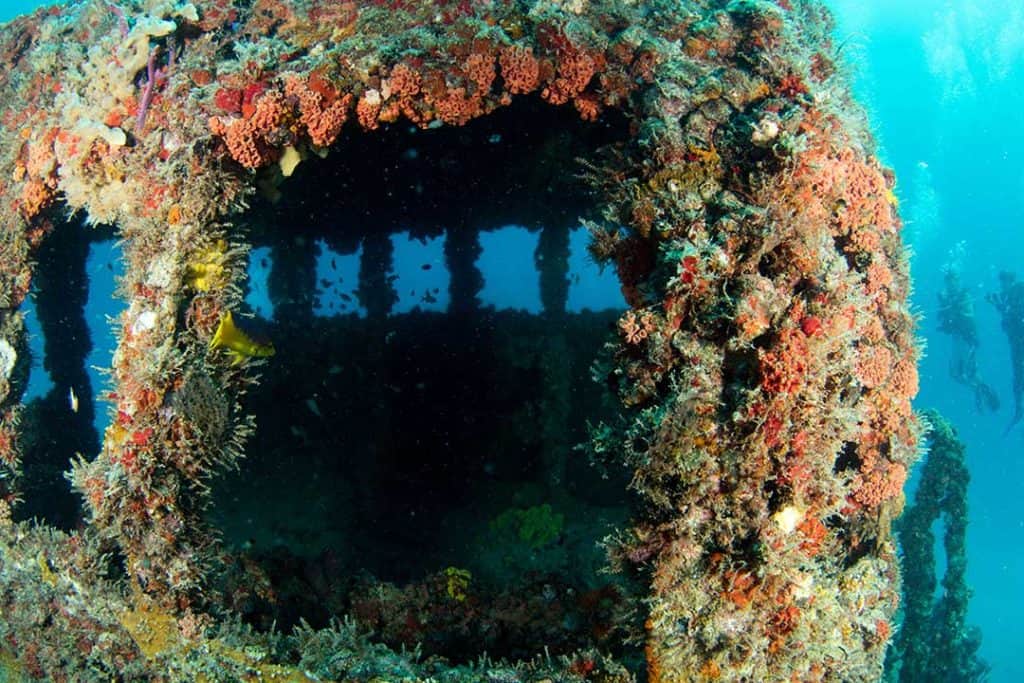
Fort Lauderdale may be great for shore diving, but it’s also a wreck heaven. Over the past 20 years, the artificial reef programs in Broward County have placed 76 artificial reefs on the ocean floor, making it the largest warm water wrecks collection in the western world.
Some of the most popular wrecks include the Kay Scutti, Tracy, and Merci Jesus which can actually all be seen together if the current is right. Three retired oil platforms called Tenneco Towers make up a unique site.
The oil rigs are plentiful with corals, sponges and schools of fish. Many of these wrecks are lined up stern to bow and stretch for miles.
Hog Heaven is a great wreck to spot hogfish or lionfish. Lionfish is invasive in this area and many divers head to this site to spearfish and make them into tacos, all while helping the local ecosystem.
Shark Diving In Florida
Whether you’re hoping to dive with sharks and catch an adrenaline rush or dive for shark teeth to take home a little piece of the past, Florida has all of the diving to do with sharks that you could ask for.
It’s important to note that pretty much anywhere you dive in the ocean could include a special guest appearance from a shark, and I’ve seen sharks in salt water all over the state, even when not on a designated ‘shark dive.’
However, there are a few places you can go specifically which are known for a greater number of sightings.
Jupiter
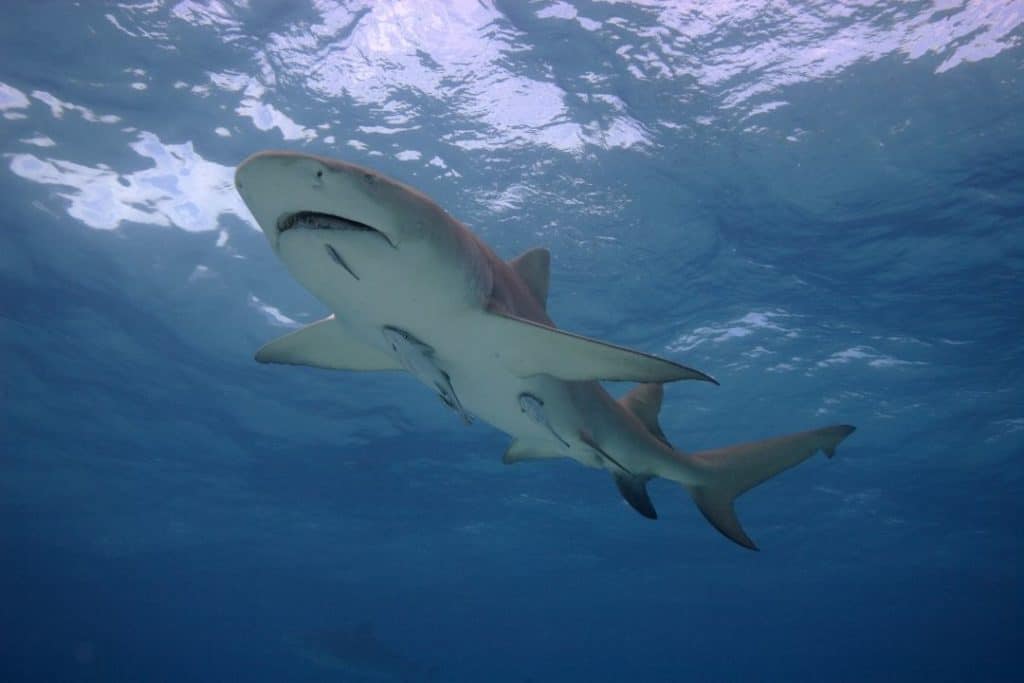
Jupiter has become a popular spot for more advanced divers in Florida, as it has a strong current and many shark sightings.
A ripping current from the Gulf stream brings in all sorts of ocean life, from reef fish to giant stingrays. You may even have shark encounters, see some sea turtles.
There are so many different dive sites in Jupiter.
One of the most popular is Area 51 and is known for its marine life: loggerhead turtles, reef sharks and Goliath grouper in particular.
The Tunnels are a well-known site for spotting reef and nurse sharks.
There are many natural swim-throughs here as well. To spot green moray eels, head to the Scarface spot where you have the chance to spot the resident green moray eel who has a scar on his face, hence the name ‘Scarface’.
It’s important to note that almost any dive in Jupiter can become a shark dive, so I recommend choosing an eco-friendly charter that doesn’t feed the sharks, as this can disrupt the ecosystem and make the sharks dependent on food.
There are many operators that take great care in trying their best to make sure you see sharks, and caring about the environment, too.
Venice, Florida
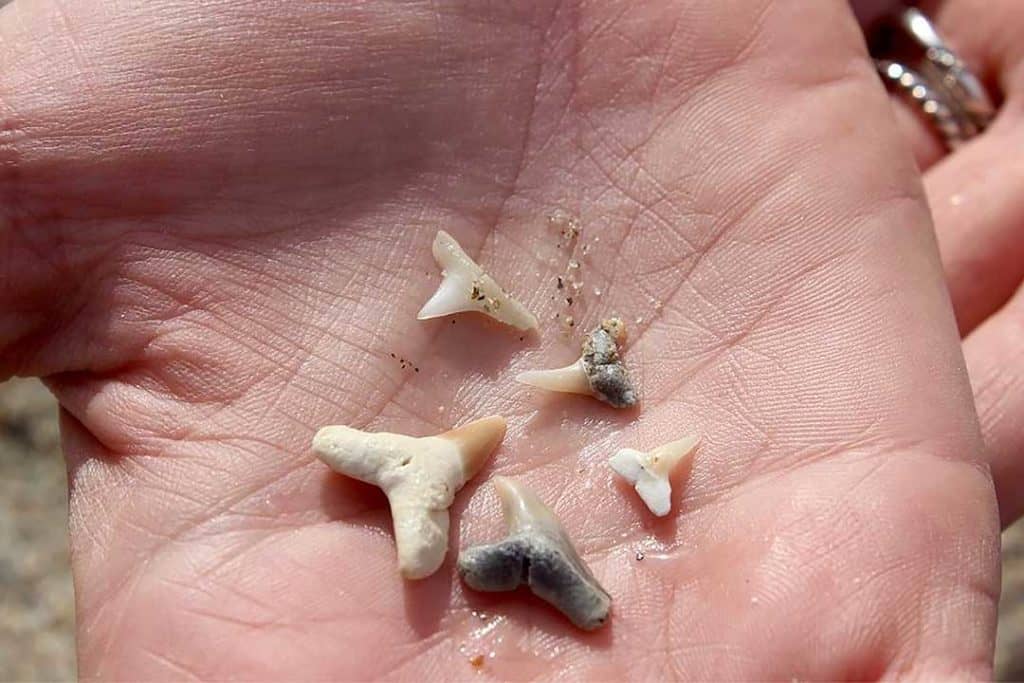
Venice, Florida is known as the “Shark Tooth Capital of the World”.
Sarasota County residents and visitors enjoy hunting of fossilized shark teeth as a favorite pastime. The best place to find them is along the beaches of Venice, Florida.
Ten million years ago, when Florida was submerged under water, the area was teeming with sharks.
Over time, as the water receded giving way to land, the prehistoric sharks died – their skeletons disintegrated, but their fossilized teeth remained.
The Venice coastal area, just south of Sarasota, sits on top of a fossil layer that runs 18-35 feet deep. With storms and waves, the fossils are slowly driven into the shallow waters and then up onto the beach.
Most shark teeth are from 1/8″ to 3/4″ or even a bit larger. The really large shark teeth are usually farther out and require dive equipment to locate.
Local Venice dive boats will take you out as they cruise a few miles from the shore.
In fact, several boat captains charter trips along the Venice coastline in search of prehistoric fossils and shark teeth.
Does Miami have good scuba diving?
You may not realize this, but Miami Beach is actually a barrier island composed of limestone coral rock.
This means it’s easily a great location for diving, as well as it’s well-known nightlife and beaches.
This beautiful destination is home to abundant coral shelves, patch reefs and wreck dives ready for underwater exploration by scuba divers. Let’s have a look at a few of the pristine dive sites you can enjoy in Miami.
Biscayne National Park
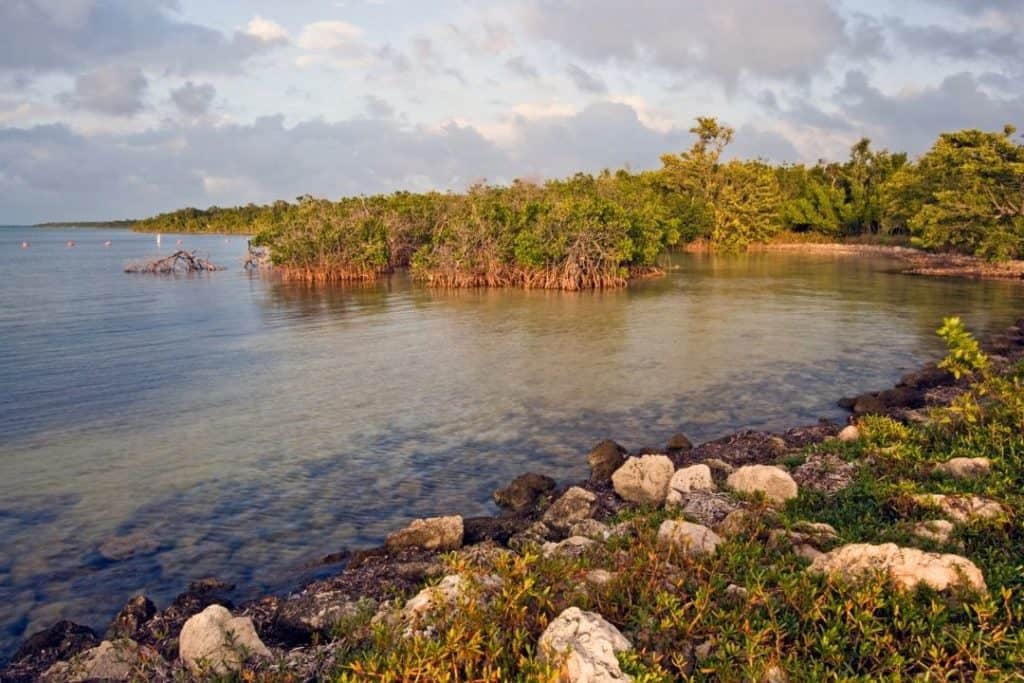
95% of the park is underwater. This expanse of Biscayne Bay is found off the shores of South Dade Country and is bound by the uppermost islands of the Florida Keys before you reach Key Largo.
Here, you’ll find the Maritime Heritage Trail, which includes so many fascinating areas to explore, from shipwrecks to reefs and a lighthouse. With both shallow and deep-water dives, there are sites for divers of all abilities to explore here.
Emerald Reef
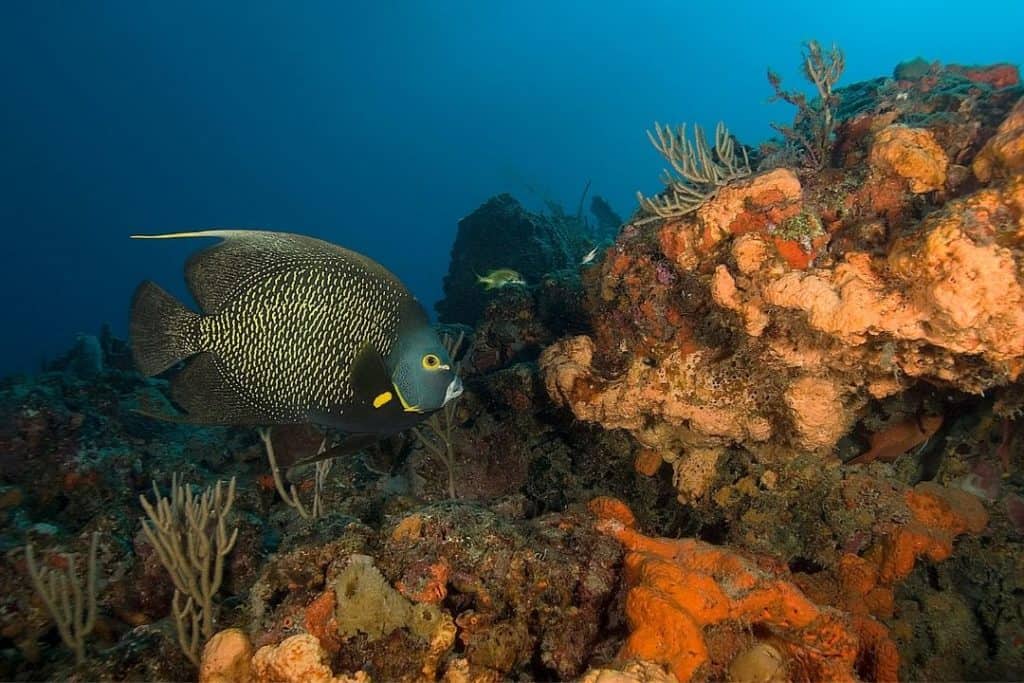
Composed of three shallow patch reefs located one mile east of Key Biscayne, Emerald Reef is considered one of Miami’s most beautiful reef sites.
With an average depth of about 20 feet, you can expect to find elkhorn and pillar coral, sponges, and schools of juvenile tropical fish like sergeant major, blue tang and damselfish.
Half Moon Shipwreck
In water as shallow as 10 feet, located just offshore between Virginia Key and Key Biscayne, Half Moon Preserve is accessible to snorkelers and divers.
Named for the 154-foot German sailing yacht captured by England during World War I, the Half Moon eventually made its way to Miami waters and ran aground in 1930, transforming the wreckage into an underwater archaeological preserve.
Neptune Memorial Reef
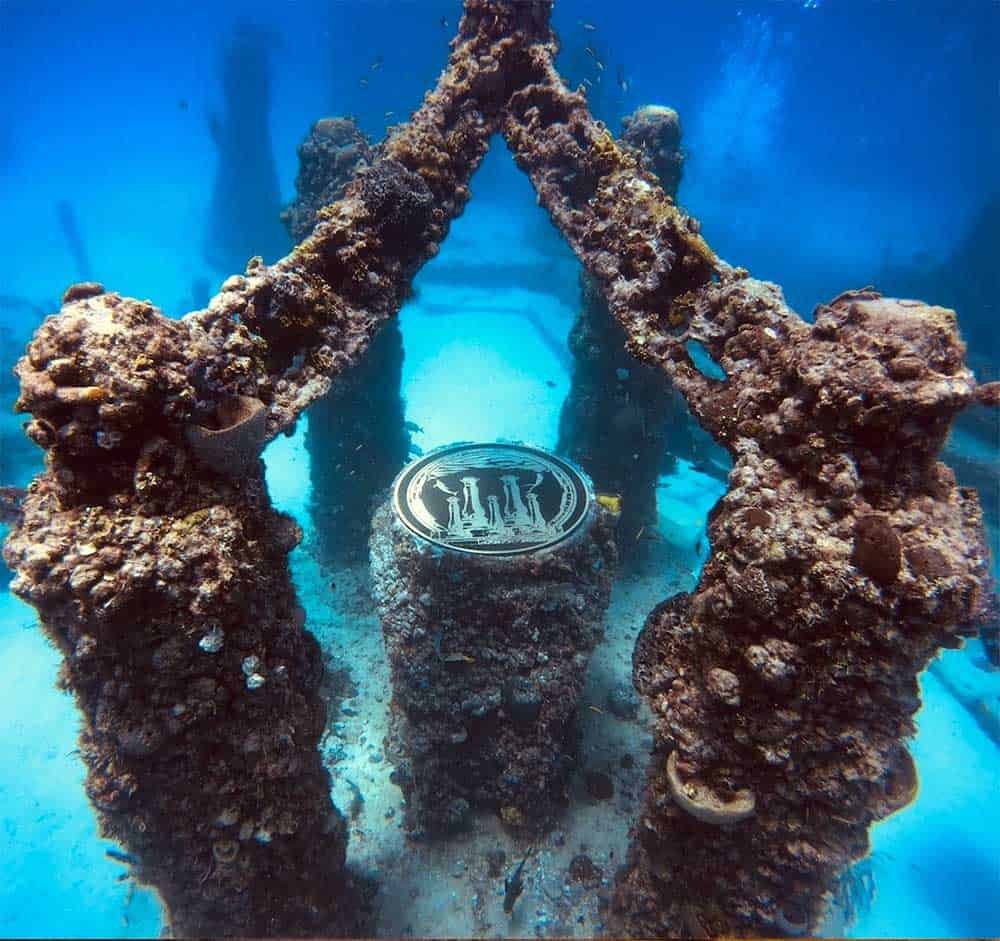
Situated three miles East of Key Biscayne, Neptune Memorial Reef was built in the image of the lost city of Atlantis. Spanning hundreds of thousands of square feet, it’s one of the largest man-made artificial reefs ever created.
With a depth of about 40-feet, you can dive amidst concrete statues, columns, domes and arches. It was designed as a destination for the dearly departed, where cremated remains can be spread amidst the concrete structures in memorial.
Sheri-Lynn
One of the most impressive wreck dives in Miami, the Sheri-Lynn is a great for advanced divers.
The wreck is a 235-foot Dutch freighter ship built in 1952 whose remains are now scattered along the ocean floor 90 feet below the sea.
With multiple bulkheads and tanks within the wreckage to explore, the ship is a thriving artificial reef where large pelagic fish, like grouper, mahi-mahi and sharks abound off the shores of Key Biscayne.
Conclusion
It’s easy to see why Florida is a dream vacation or home for any diver.
With beautiful reefs, tropical fish, wrecks, history, artificial reefs, caves, and natural springs, there is something for everyone.
I hope you’ve spotted a few dive sites to add to your Florida bucket list and look forward to seeing you diving around the beautiful state I call home.
